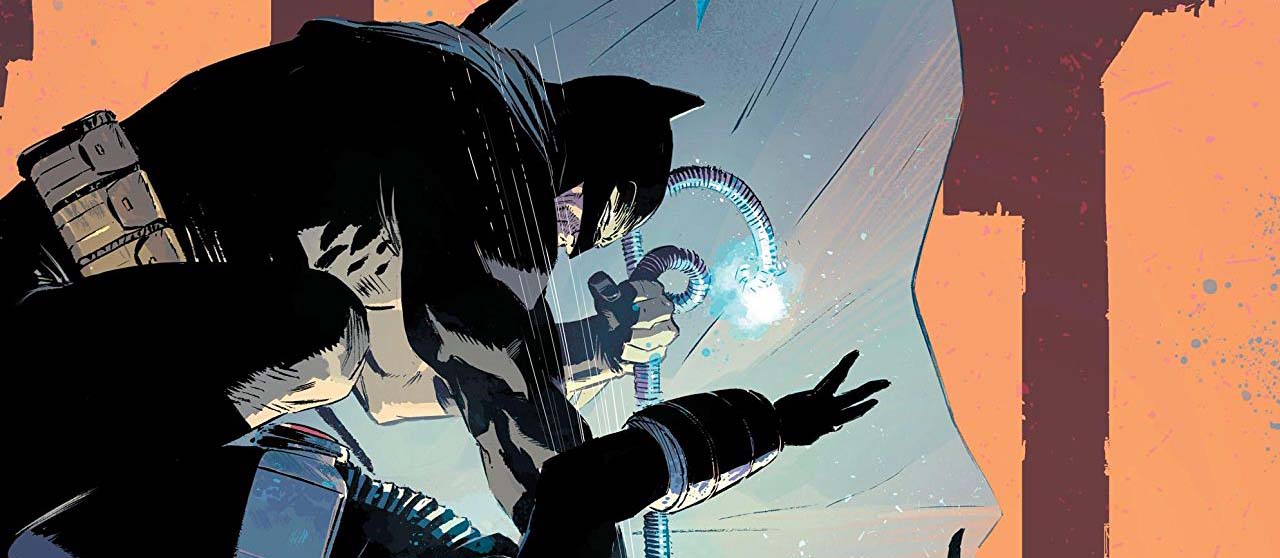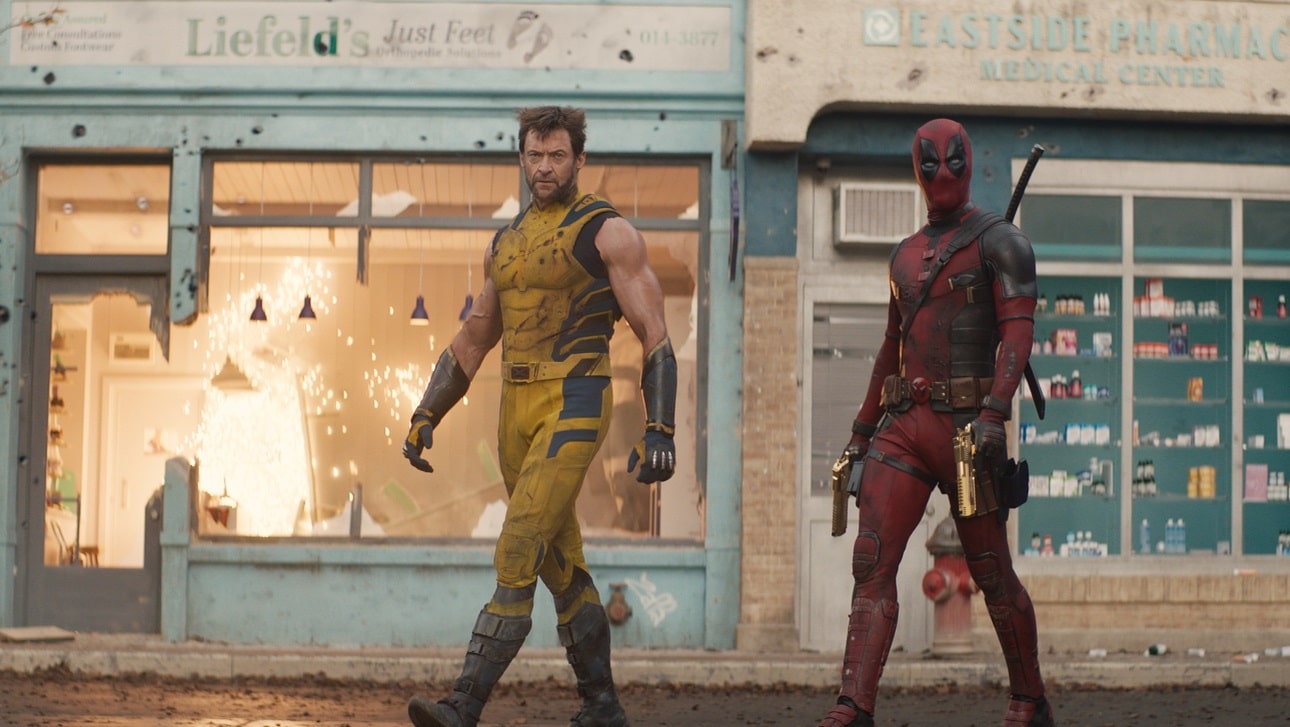For the week of 7/18/25, Batman #51 was the bestselling comic on the Comixology sales chart… and yes, that could include people at en route or at Comic-Con. Let’s have a look at the full chart:
| Comixology Rank | Issue | Previous Issue Print Sales Est. | Previous Issue Diamond Rank |
| 1 | Batman (2016-) Issue #51 | 121,836 | 5 |
| 2 | Justice League (2018-) Issue #4 | 86,001 | 10 |
| 3 | Avengers (2018-) Issue #5 | 59,572 | 20 |
| 4 | Darth Vader (2017-) Annual Issue #2 | 50,072* | 30 |
| 5 | Thor (2018-) Issue #3 | 63,257 | 17 |
| 6 | Injustice 2 (2017-) Issue #67 | Digital First | Digital First |
| 7 | Star Wars (2015-) Issue #51 | 49,655 | 31 |
| 8 | X-Men Red (2018-) Issue #6 | 38,372 | 36 |
| 9 | Immortal Hulk (2018-) Issue #3 | 84,153 | 11 |
| 10 | Tony Stark: Iron Man (2018-) Issue #2 | 135,727 | 3 |
| 11 | Dark Nights: Metal: Deluxe Edition | 11,034* | 1-GN |
| 12 | The Wild Storm (2017-) Issue #15 | 14,107 | 143 |
| 13 | East of West Issue #38 | 12,603 | 162 |
| 14 | Infinity Countdown (2018-) Issue #5 (of 5) | 52,369 | 27 |
| 15 | X-Men Gold (2017-) Issue #32 | 88,238 | 9 |
| 16 | The Magic Order Issue #2 | 157,731 | 2 |
| 17 | Jessica Jones – Marvel Digital Original (2018) Issue #1 | Digital First | Digital First |
| 18 | Runaways (2017-) Issue #11 | 12,047 | 165 |
| 19 | Green Lanterns (2016-) Issue #51 | 24,157 | 88 |
| 20 | Star Wars: Poe Dameron (2016-) Issue #29 | 23,102 | 91 |
The real interesting thing at the top of the chart is Batman vs. Justice League. As you may recall, Justice League‘s first two issues outsold Batman, but the non-wedding issue and this week’s Batman #51 have both outsold Justice League #3 and #4. Is Batman getting a little increased interest after the non-wedding? Is Justice League finding its level a bit lower than than the first two issues? Both? This is worth watching and it will be interesting to see what the July Diamond numbers for Justice League look like.
Avengers and the Darth Vader Annual are next. We can likely assume the Vader Annual‘s print orders were in the vicinity of 50K, so Avengers is probably still holding it’s audience a bit above that. As one of the presumptive Marvel flagship books, that’s one of the ones we want to keep an eye on to see what their single issue sales ceiling is going to be for ongoing titles. There are no indications Avengers is going to be raising that ceiling from the previous relaunch, just sticking around the previous ceiling.
Thor is next and it’s probably hanging around the print equivalent of 50K, sandwiched in between Vader and Injustice. Which seems like it’s probably not performing quite as highly in digital as the Jane Foster version did. But, it’s only the third issue. Things could change a bit and Jane Foster’s run over-performed.
Star Wars is back below Injustice on the chart, which we can probably take to mean it’s back below the print equivalent of 50K after the anniversary issue. It has been slipping lately.
X-Men: Red is next and this is where things start to get unpredictable between the relaunches and over-performing Image titles. The previous issue of X-Men: Red ordered into the Direct Market at a bit over 38K. Is this issue over-performing relative to that or is it about the same? It’s a bit hard to tell, but let’s say it’s about the same.
The next two titles on the list are Immortal Hulk and Tony Stark: Iron Man. Both are way off their print debut numbers, but digital doesn’t have variants or ordering incentives, so these numbers are likely more indicative of the actual readership. And that would be appear to be the equivalent of a mid-to-high 30Ks print readership. Which is a step up for Hulk, but treading water at best for Iron Man… if these numbers hold up. It’s been awhile since a Hulk book was outselling an Iron Man book.
Following those two is a sale graphic novel. Yes, Dark Nights: Metal was on sale digitally and was selling like a mid-to-high 30Ks print floppy. It was the highest ordered book on that chart in June with 11K orders and sold perhaps 2,500-3,800 copies while on sale, looking at that chart. People love a good sale, though we don’t have clearly defined boundaries around this book.
Next on the chart are two known over-performers in digital: The Wild Storm and East of West.
After that is a major under-performer. Either the digital audience is significantly less interested in Infinity Countdown or the print orders are significantly inflated by variants and incentives. Perhaps a bit of both.
Next is X-Men: Gold. This one is a bit of a mystery. The last issue we have an estimate for is the wedding issue, so that’s skewed. The issue before that was ordered into the DM at ~36.4K and that seems like it could be a little high for where it is on the chart… or maybe it’s just a lot of books in between X-Men: Gold and X-Men: Red that have very similar digital sales.
After that we have a new digital first title: Jessica Jones, which is a little unusual in that Marvel digital first comics don’t always make the top 20. This one is behaving like a… call it 25K-35K print seller would. (Maybe 25K – 30K?) It’s not Injustice, but that’s an improvement for Marvel.
Next is Runaways, another consistent over-performer in digital.
The top 20 concludes with Green Lanterns, which sells at a bit over a 24K clip in print and Star Wars: Poe Dameron, which sells at a bit over a 23K clip in print. Thus we have a little consistency and a sales guidepost at the end of the chart, even if there are a lot of question marks for exact levels above it.
Methodology and standard disclaimers:
The initial methodology is to compare the current issue on the Comixology top 20 chart (issues pulled the evening of 7/15) with the last issue we have print sales estimates for from the Comichron June chart.
The conventional wisdom that’s been handed down over the last few years is that he digital audience has more of less the same reading habits as the Direct Market Print audience. I’ve had multiple publishers tell me that digital sales of new issues are roughly 10-15% of print sales and the titles more or less have the same proportional popularity in digital as in print. Maybe a couple titles switch places on the sales ranking list, but largely the same. The bestsellers on the newsstand were not always the same bestsellers as in the Direct Market, so it doesn’t seem like that should necessarily be the case with digital. There will be a little bit of mismatch because these are more weekly than monthly ranks and it isn’t clear exactly how Comixology defines the reporting periods, but if you look at comics sales, you learn to live with the data available.
Want to learn more about how comics publishing and digital comics work? Try Todd’s book, Economics of Digital Comics








